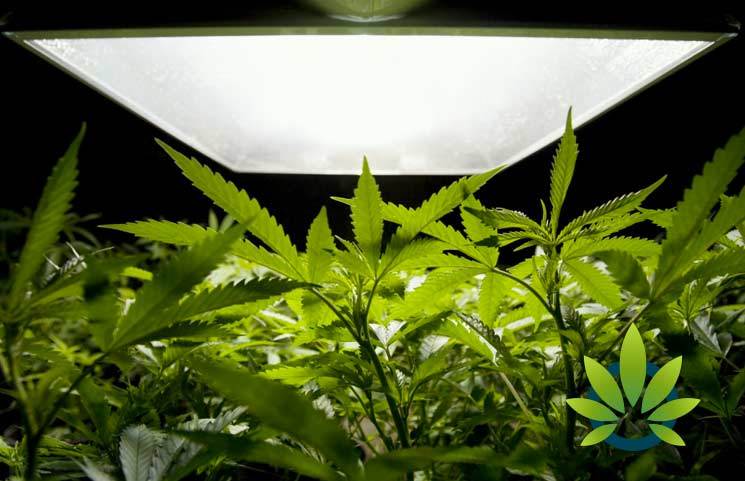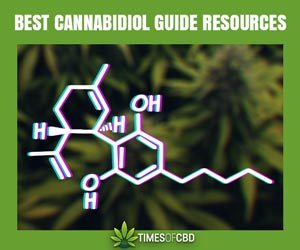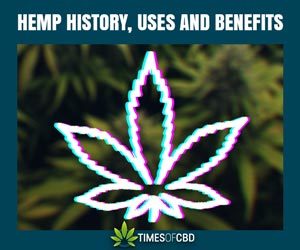Facts & Figures
The Story of Marijuana’s Legal Status: Exposing the Truth on When Cannabis Become Illegal

When did marijuana become illegal in the United States? This is often the question asked by people when they hear about its legalization in recent times. Well, in short, the answer is on 2nd August 1932. The then U.S President Franklin D. Roosevelt signed the Marijuana Tax Act, which became the first kind of law passed against marijuana possession and of sale or growth. In fact, it was all but a cumulative tale of lies and misleading which led to criminalizing the naturally occurring substance.
For hundreds of years, cannabis was grown and used by the local people as a form of medicine and social recreational tool. Even in countries far off like India, marijuana was considered as Ayurvedic medicine and was given topmost priority and a sacred potent plant able to heal several medical conditions. And then suddenly in the 1900s marijuana was seen as an illicit drug and soon the social status of marijuana was about to undergo a massive change. This outlaw was presided by more of xenophobic assumptions and communal hatred that arose in the 20th century against neighboring states and ethnic communities. Soon marijuana would be the victim of racial discrimination which was at heights that time.
The Mexican Xenophobia
In the year 1910 when the Mexican civil war broke out, it forced a huge number of the local Mexican people to flee their country to northern border states of America. Till 1920 the Mexican Revolution lasted and this resulted in a large population of Mexican immigrants in the bordering states of U.S. During this time there was a major defamation plan going on in the radical American minds against these immigrant population and so they started playing “dog whistle politics”. Though this term was first coined by the Washington Post in 1988, this had prevailed as a common tool of the ages. The politicians and media targeted the marijuana-using Mexicans and started saying that they were an inferior race not suitable for surviving on American soil. The nationalist politicians and the biased media started using race targeted terms like ‘law and order’, ‘war on terror’ and ‘tough on crime’ to incite hatred and gradually outlaw these people. All these were nothing but deliberate actions of denigrating the minorities. They claimed that the Mexicans were dangerous people who were fueled by marijuana.
With time the public was lured to believe in these false accusations through repeated broadcasts, on televisions and radio, of misbeliefs about the growing number of immigrants. Even rumors had it that marijuana use induced violence in behavior gave strength and aroused bloodlust. It was falsely propagated that the American kids were buying and taking this deadly drug from the dangerous Mexicans.
Anybody with a sane mind would get it that marijuana was being targeted and demonized along with these unfortunate population of immigrants. In the town of El Paso, Texas the states’ authorities would need any silly reason to search, detain and deport their unwelcome visitors. It was marijuana that was the most common and convenient reason to torture anybody. For the Mexicans, cannabis was more than a medicine, rather a practice. Hence it became an obvious way to control the immigrant crowd by keeping an eye on their customs and traditions. Soon it became a nationwide trend to harass this race of people in the name of the plant.
Along with the Mexicans, the African-American people also faced a similar fate during those times. Marijuana was associated with prostitutes, criminals, and jazz musicians who were mostly of African background. It was all a series of unfortunate lies and events which ultimately made the lives of these people no better than hell. Generally, successful propaganda is the result of constantly repeated falseness. Along with it the prejudice of alcohol abuse and the rise of crimes added to the fuel of antagonism among the masses against cannabis use.
The Axe Fell On Marijuana
In 1911 Massachusetts became the first American state to introduce a legal action against marijuana possession and use. It led to the restriction on marijuana use and all the residents had to have prescriptions for growing so-called ‘Indian hemp’. California, Maine, and Wyoming became the first of all states to introduce marijuana ban in 1913. By 1933 29 states followed in the steps and led a complete ban on cannabis. This was a counteract to the 1619 law which allowed Virginia colonists to legally grow hemp. It was the ideal of 1930s where it was a common false belief that marijuana use incited African-American people to become violent and engage in illicit sex with white women.
The joining of the U.S in the International Opium Convention in 1925 led to a prohibition on exporting marijuana to countries where it was banned and regulated. There were only a few countries outside U.S where the use of marijuana for medical purposes was carried out and also there numbers were reducing over the years and the U.S could only export to those nations. The Great Depression which began in 1929 and lasted until late 1930s also gave a blow to the marijuana’s nature. It was assumed that unemployment was a result of cannabis use as users became lazy and the addiction led to the economic collapse. Cannabis use was also related to crimes which were caused by the racially inferior and the economical underclass tier, especially the immigrants and the African origin people. By 1934 the Uniform State Narcotics Act was implemented following the failure of the Harrisons act of 1914 which controlled the sale and use of narcotic drugs.
The Federal Bureau of Narcotics (FBN) was formed on 14th June 1930, where Harry Anslinger was made the first Commissioner. He is regarded as the pioneer in marijuana prohibition, however, the fact was that he was just one of the many cogs in the wheel. Anslinger was regarded as a hater of ethnic minorities and was often found abusing the Mexicans and other native Indians. Another hater of ethnic minorities especially Mexicans, William Randolph Hearst, a famed media magnate was also involved in defaming marijuana as the then Mexican General Pancho Villa had seized more than eight hundred thousand acres of Hearst’s timberland during the Mexican revolution. They were aided and encouraged by Lammot Du Pont who was a key member of the DuPont chemical company. DuPont was making paper out of trees and the fact that hemp could be used to make paper was outraging to them. Also, hemp fiber was a rival to the recent invention of nylon by DuPont in 1924.
In July 1937 in one of his publications The American Magazine, Hearst had published a rubbish story on an American teenager who killed his family members after using weed and doesn’t remember doing it. It was entitled: “MARIJUANA – Assassin of Youth.’
However not all were carried away by this false spell. Dr. William Woodward of the American Medical Association (AMA) in 1937 testified in front of Congress about the various medicinal values of marijuana and stated the harmlessness of it. During that time Anslinger had come up with the anti-marijuana legislation and a member of the hearing committee falsely commented that the AMA had supported the bill. Hence the Marijuana tax act was passed in 1937. Under this act, anyone who would grow, sell, import or prescribe marijuana would be levied with $1 tax. Those who violated the rule were fined up to $2000 which was very high compared to those time standards. It could also invite imprisonment of up to 5 years as the FBN was given administrative and regulatory powers.
The physicians at that time were also required to report the use of weed among patients in a written statement. They had to provide name, address and illness of the patients who used marijuana. Initially, after one day the bill was passed, Moses Baca became the first citizen to be arrested for cannabis possession who received 18 months imprisonment. Following Baca, Samuel Caldwell was the first to be convicted of selling weed and he received a sentence of 4 years of hard labor.
After Effects of the Tax Act
New York City Mayor, Fiorello LaGuardia founded a commission in 1939 to study the adversities of smoking marijuana. He was a strong opponent of the 1937 Marijuana Tax Act. In the reports published by the commission in 1944 it rejected the notion that smoking marijuana leads to insanity, deteriorates physical and mental health, assists in criminal behavior and juvenile delinquency. It also cleared the confusion that marijuana is physically addictive, and is a “gateway” drug to more dangerous drugs. Anslinger was infuriated by this and the war on marijuana continued.
In 1952 the Boggs Act and in 1956 Narcotics Control Act were introduced in American law. Each of them struck a heavy blow to the possession and use of marijuana. In the late 1960s, Timothy Leary, challenged the constitutionality of the Act. Leary who was a pro-psychedelic drug advocate resisted the act stating that it impacted upper-middle-class American college students who had began to experiment with drugs. This led to the Act being struck down in 1969 by the Supreme Court because it violated the Fifth Amendment which gave right to avoid self-incrimination. However, the Congress came up with the Controlled Substances Act in 1970 which designated marijuana as a classified Schedule I drug similar to heroin. This would ensure marijuana as illegal in the U.S.
The Light of New Age
The Shafer Commission formed in 1972 issued a report which called for the decriminalization of marijuana and recommended that cannabis be removed from the Controlled Substance Act Schedule I drug. However President Nixon ignored the findings of this commission. Often termed as Caucasian drug, and used by middle-class individuals, the majority of states reviewed their regulations for marijuana possession and use. Since 1970 to 2010, the ‘War on Drugs’ suffered losses up to $1 trillion and it was gradually failing to prevent the deaths of hundreds of thousands of people, caused by heroin, cocaine, and amphetamines. These deadly opioid drugs were available on prescription, however marijuana a naturally occurring drug with potential medical benefits was still illegal and unavailable federally.
In 1988, Judge Francis Young from the Drug Enforcement Agency (DEA) recommended cannabis legalization. However as it was against the interests of the big pharma companies who were making drugs for pain, fever and other medical conditions, which could be treated by cannabis, and making huge profits, the experts’ opinions were ruled out. It threatened their markets so the common taboo mentality was maintained. Supreme Court cases like Gonzales v. Raich, and United States v. Oakland Cannabis Buyers’ Cooperative have been supporting the marijuana legalization.
In 1996 California opened its gates to cannabis by legalizing it. And gradually more number of states followed it's footprints. As of now 33 states, including the District of Columbia, and the territories of Guam and Puerto Rico have legalized medical use with a doctor’s advice. The recreational use of cannabis is legal in 10 states (Alaska, California, Colorado, Maine, Massachusetts, Michigan, Nevada, Oregon, Vermont, and Washington), the District of Columbia, and the Northern Mariana Islands.
Some of the cannabis derivative compounds like cannabidiol (CBD) have been approved by the Food and Drug Administration for prescription use. The recent signing of the Hemp farming Act by President Donald Trump has also allowed for legal growth of hemp for fiber, medicinal and other industrial uses. Of more than 80 years of prohibiting use of marijuana, the majority of the ban support was based on prejudice and without any scientific proof.






